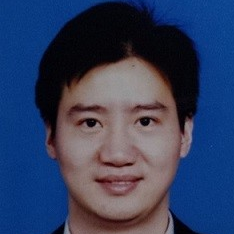Advanced Numerical and Computer Methods in Civil Engineering—2nd Edition
A special issue of Buildings (ISSN 2075-5309). This special issue belongs to the section "Building Structures".
Deadline for manuscript submissions: 30 June 2024 | Viewed by 1421
Special Issue Editor
Interests: construction materials; mechanical analysis
Special Issues, Collections and Topics in MDPI journals
Special Issue Information
Dear Colleagues,
The developments and applications of advanced numerical and computer methods in civil engineering have become increasingly important for modern engineers and researchers in recent decades. Advanced numerical and computer methods can be used, from the material level to the structural level, for solving nearly all engineering problems solely or in combination with experimental/theoretical studies. Some related research papers have been published in the previous edition of this Special Issue, which can be accessed using the following link:
https://www.mdpi.com/journal/buildings/special_issues/R8XH61D33E
In this Special Issue, we would like to collate manuscripts that present recent progress either in the novel development or the new application of advanced numerical and computer methods for solving problems in civil engineering. Our interests include, but are not limited to, the following areas:
- Advanced finite element/meshless/boundary element/peridynamic/discrete element/date-driven-based/machine learning-based/CFD technologies in civil engineering;
- Advanced atom-level/molecular-level/cross-scale/multi-physics modeling in civil engineering;
- Advanced strength/stability/failure/fatigue/fracture/dynamic/thermal/accoustic analysis and optimization in civil engineering with numerical and computer methods;
- Other contents in the scope of advanced numerical and computer methods in civil engineering.
Dr. Dongming Li
Guest Editor
Manuscript Submission Information
Manuscripts should be submitted online at www.mdpi.com by registering and logging in to this website. Once you are registered, click here to go to the submission form. Manuscripts can be submitted until the deadline. All submissions that pass pre-check are peer-reviewed. Accepted papers will be published continuously in the journal (as soon as accepted) and will be listed together on the special issue website. Research articles, review articles as well as short communications are invited. For planned papers, a title and short abstract (about 100 words) can be sent to the Editorial Office for announcement on this website.
Submitted manuscripts should not have been published previously, nor be under consideration for publication elsewhere (except conference proceedings papers). All manuscripts are thoroughly refereed through a single-blind peer-review process. A guide for authors and other relevant information for submission of manuscripts is available on the Instructions for Authors page. Buildings is an international peer-reviewed open access monthly journal published by MDPI.
Please visit the Instructions for Authors page before submitting a manuscript. The Article Processing Charge (APC) for publication in this open access journal is 2600 CHF (Swiss Francs). Submitted papers should be well formatted and use good English. Authors may use MDPI's English editing service prior to publication or during author revisions.
Keywords
- numerical methods
- computer methods
- civil engineering
- computational mechanics
- computational materials
Related Special Issue
- Advanced Numerical and Computer Methods in Civil Engineering in Buildings (10 articles)





